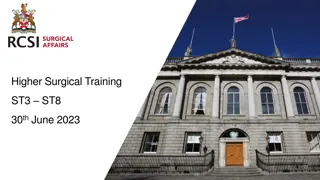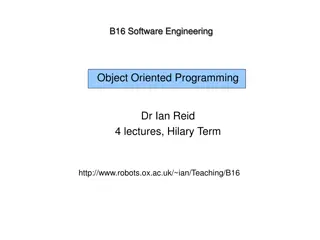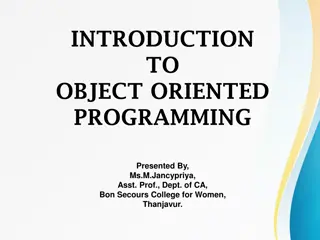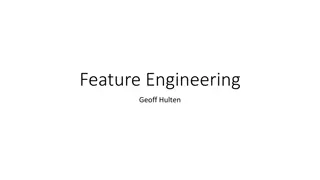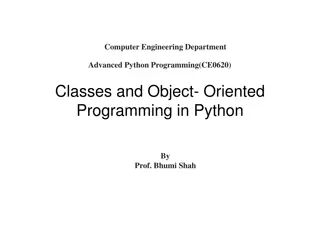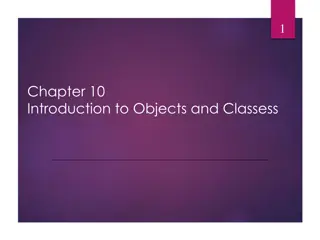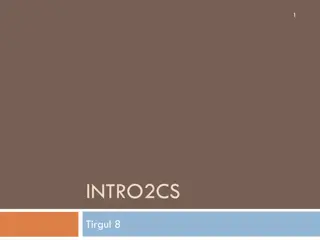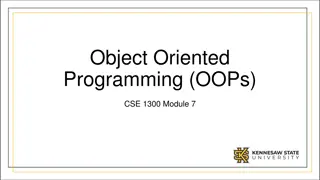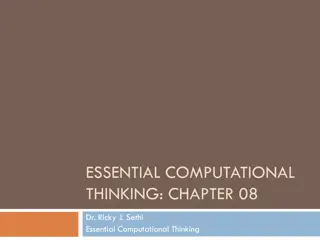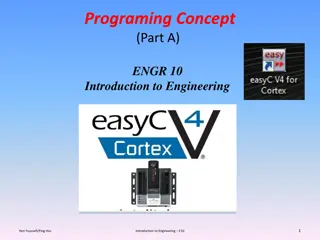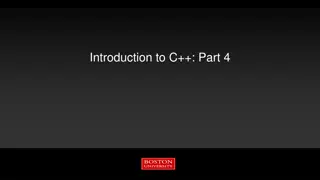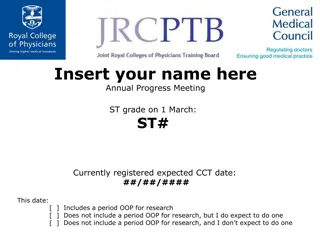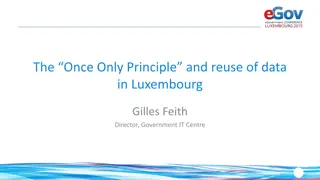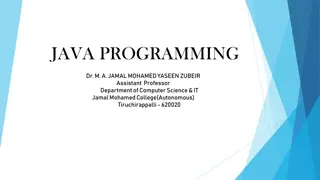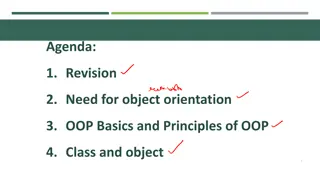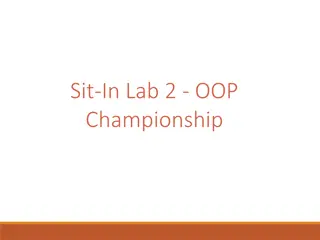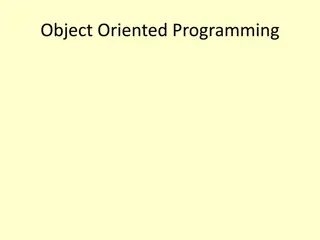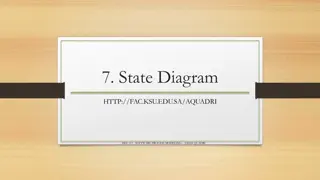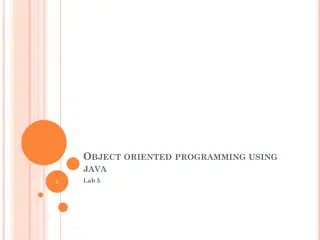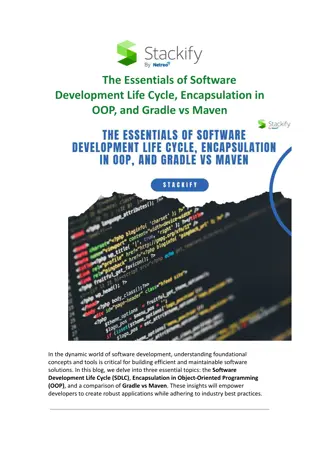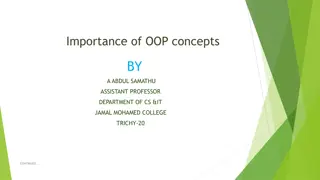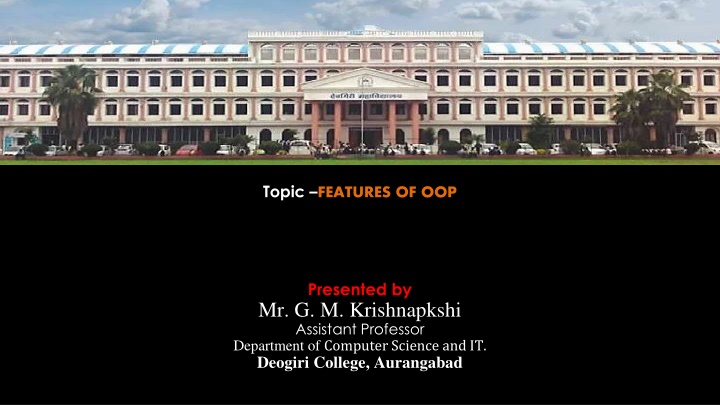
Understanding Features of Object-Oriented Programming (OOP)
Explore the fundamental features of Object-Oriented Programming (OOP) such as Class, Object, Inheritance, Abstraction, Encapsulation, Polymorphism, Dynamic Binding, and Message Passing. Gain insights into the core concepts of OOP presented by Mr. G. M. Krishnapkshi, Assistant Professor at Deogiri College, Aurangabad.
Download Presentation

Please find below an Image/Link to download the presentation.
The content on the website is provided AS IS for your information and personal use only. It may not be sold, licensed, or shared on other websites without obtaining consent from the author. If you encounter any issues during the download, it is possible that the publisher has removed the file from their server.
You are allowed to download the files provided on this website for personal or commercial use, subject to the condition that they are used lawfully. All files are the property of their respective owners.
The content on the website is provided AS IS for your information and personal use only. It may not be sold, licensed, or shared on other websites without obtaining consent from the author.
E N D
Presentation Transcript
Topic FEATURES OF OOP Presented by Mr. G. M. Krishnapkshi Assistant Professor Department of Computer Science and IT. Deogiri College, Aurangabad
Features Features of of oop oop
Featuresofoop: 1. Class 2. Object 3. Inheritance 4. Abstraction 5. Encapsulation 6. Polymorphism 7. Dynamic binding 8. Message passing
Class: Class is a basic building block of OOP and a single entity which has data and operations on data together. Emphasis on data rather than procedure. Object: The instanceof a class which are used in real functionality its variables andoperations. Programs are divided into entities known asobject. Data structures are designed such that they characterise objects Objects communicate with each other through functions.
Inheritance: The capability of class to derive properties and characteristics from another class is calledinheritance. Inheritance support the concept of reusability . There are two classes involved in inheritance- 1.Base class 2.Derived class Ex:
Ex.ofinheritance: Syntax: ClassA { // Body of class }; Class B:access specifierA { //Body of class };
Abstraction: Abstraction means displaying only essential informationand hiding the details Data abstraction refers to providing only essential information about data to the outside world ,hiding the background detail. Ex: In real life ex ATM machine performingall the Operation like cash withdrawal ,money transfer etc.BT we don t know about the internal mechanism. This is actually the data abstractionwhich is used to provide security to the data from unauthorized users.
Encapsulation: Encapsulation is defined as wrapping up of data andinformation under a single unit.I In object oriented programming,encapsulation is defined as binding together data and the function that manipulatethem. Polymorphism: The word polymorphism means having many forms. In simple words it is the ability of message to displayed in more than one form. An operation may exhibit different behaviour in different instances ,it depends upon the type of data used.
Dynamic blinding: In dynamic binding the code to be executed inresponse to function call is decided at runtime. Cpp has virtual functions to supportthis. Message passing: .Objects communicate with one another by sending andreceiving information to each other. A message for an object is a request for execution of a procedur and therefore will invoke a function in the receiving object that desired results. Messagw passing involvespecifying the name of object ,the name of function and informationsend.

